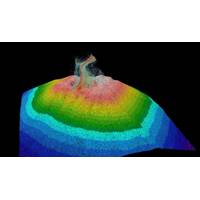
SOI Steps Ahead on Ocean Mapping
found via ROV SuBastian's video footage, there is a lot of life down there. We mapped using Falkor (too)'s ship capabilities, and we had MBARI's AUVs with us on board, sent down to do a very high-resolution map of areas of interest.And then we had a CTD that went down and measured the chemical composition. Then we sent the ROV down, and almost every time they found something new.Our second cruise was to test technology, as we also have technology test cruises and not just science and exploration. That one was to test new sensors for coral reef health assessment around Puerto Rico. First
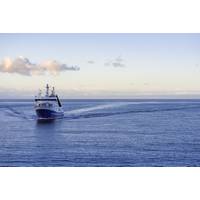
Scientists Working to Provide Detailed Picture of Tonga Volcano Eruption's Aftermath
and structure of the underwater landscape, including the thickness of ash deposits and the formation of any new bedforms. This data will then be compared with previous maps to identify areas for sampling, so that further changes to the area, such as impacts to marine life and the seafloor’s chemical composition, can be assessed.Detailed Picture of Eruption's AftermathKevin Mackay is head of the South and West Pacific Regional Center of Seabed 2030 and the voyage leader. He says that the collective knowledge, experience, and resources of the organizations involved will help build a detailed and

The Ocean's Microplastics Mess: Technology & Technique to Identify & Clean Up
pixels in an image; the continuity of these pixels defines the shape of each fiber,” Deheyn said.Another technique for identifying microplastic particles is using a confocal Raman microspectrophotometer, which can provide the “molecular fingerprint” of a specimen’s chemical composition. Professor Gordon Taylor and PhD student Luis Medina Faull from Stony Brook University explained how this instrument worked by shining a monochromatic laser through a microscope lens onto a sample. While most of the laser light is reflected or passes through, a tiny fraction of the photons

Scientists Study Largest Underwater Volcanic Eruption
, bringing samples of dense lava, ash, pumice and giant pumice to the surface, including one piece measuring 5 feet (1.5 meters) in diameter that is the first of its kind ever collected and is currently on display at the National Museum of Science and Nature in Tokyo. The physical and chemical composition of these samples are now helping scientists learn how the eruption proceeded, what made it act the way it did, and how the material changes over time
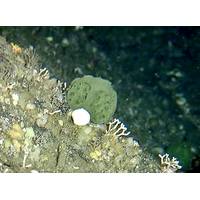
A Sea Sponge could Help Battle Cancer
are living on Alaska’s seafloor Compared to its dazzling deep-sea coral neighbors, the green Latrunculia austini sponge is pretty drab. Dotted with craters and pitted by deep holes the golf-ball sized sponge is curious-looking rather than beautiful. But green Latrunculia’s unique chemical composition holds a promise much greater than mere beauty. It was discovered at the bottom of Alaska’s frigid North Pacific Ocean during a NOAA Fisheries research mission in 2005. The mission was straightforward: study bottom-dwelling sea life and habitats supporting Alaska’s $1.8
NASA May Send Submarine to Titan
NASA has unveiled plans to send a submarine into the depths of the largest ocean of Saturn's biggest moon, Titan in a bid to explore the depths of its largest ocean. The aim to find the chemical composition of the largest ocean of the moon, Kraken Mare and search for signs of life. Jason Hartwig, a NASA cryogenics engineer has disclosed the idea while he was giving a presentation at NASA Innovative Advanced Concepts Symposium in Raleigh, reports inverse.com. "There are really two big reasons why we want to go to Titan. Number one: to determine if hydrocarbon based
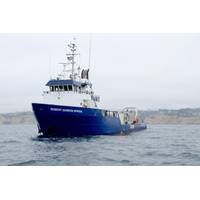
Research Vessel Runs on Renewable Biofuel for One Year
alone Though other varieties of biodiesel require modifications of the ship’s engine in order to be used, the HDRD used to power R/V Robert Gordon Sproul did not require any such adjustments. HDRD biofuel is hydrotreated, meaning all oxygen has been removed, so it’s left with a chemical composition nearly identical to the kind of marine diesel fuel typically used in California. Over the course of the biofuel experiment, which began in September 2014 and ran through December 2015, R/V Robert Gordon Sproul conducted 39 regular oceanographic research and education missions, spanning
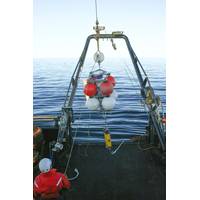
Olgoonik/Fairweather Wins BOEM Contract
biological tissues, to detect possible changes as a result of future oil and gas activities. The physical oceanography work involves studying spring meltwater runoff from the Colville River, including both river and marine water samples, including ice algae and epontic samples, with an emphasis on chemical composition (hydrocarbons and dissolved metals) and suspended sediment concentrations. A temporary mooring buoy will be deployed to monitor various physical-chemical parameters, such as temperature, salinity, and current speed and velocity using an Acoustic Doppler Current Profiler (ADCP). The ANIMIDA


 February 2025
February 2025





